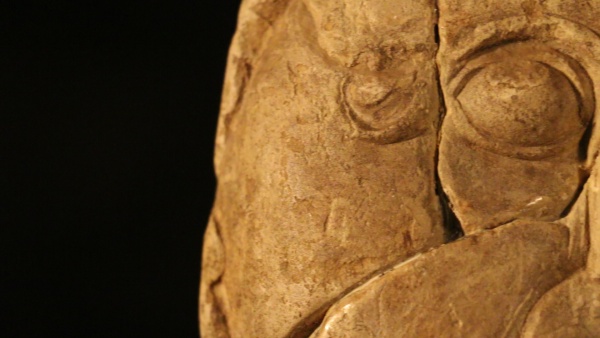01.11.2016 | The marl head from Mšecké Žehrovice is among the most important and interesting artefacts in the archaeological collections of the National Museum. The significance of this sculpture is multiple – it lies in its artistic form, its information potential and also in the interesting circumstances of its discovery.

The find was not made during systematic research, but thanks to a coincidence. The man who discovered it, Josef Šlajchrt, found the individual parts of the head in 1943, during the terrain adjustments in his sand quarry necessary after some sand was illegally mined by thieves.
His subsequent steps could serve as an example to any discoverer of an archaeological find. Mr. Šlajchrt took the individual parts of the sculpture home; not to keep them, but to inform the manager of the museum in Nové Strašecí, Josef Baumann, about his find. Baumann soon realized its importance, and he announced the unique discovery to the State Archaeological Institute in Prague.
The first archaeological research under the leadership of the archaeologist Ivan Borkovský was conducted in the same year. The excavations revealed several more fragments on the site, including La Tene pottery, some sapropel material and fragments of unfinished semi-circular jewellery made of the same, and also several pieces of metallurgical slag. Nowadays, the head is put together from four parts. The fragment with the left ear is missing and could not be found during later research.
The head was created in Mšecké Žehrovice in the late 3rd century BCE and bears many signs of the La Tene style. A number of finds of Celtic stone heads are known in Europe, but none of them has the same execution or the artistic qualities of this one.
The sculpture gives us some information about the person it depicts. This was a man, as is shown clearly by the moustache common for most Celts, as we can see in other sculptures. The torque or neck-ring worn by members of the upper classes reveals the social status of the man depicted. His unusual hair-style, with a tonsure, attests to his particular status in society. According to experts, the tonsure was most likely adopted by druids. These priests were active not only in religious circles, but also in the area of law, and enjoyed great esteem. This depiction might represent a significant revered ancestor, as ancestor worship is documented in those times.

(EK)
Archeologie Historie Hudba Lidová kultura Mimoevropské kultury Osobnosti Přírodní vědy Rekonstrukce Restaurování Rukopisy a tisky Umění Vánoce Výstavy
Muzeum 3000, zpravodajský portál Národního muzea, odhaluje jedinečná tajemství. Více se dozvíte zde!